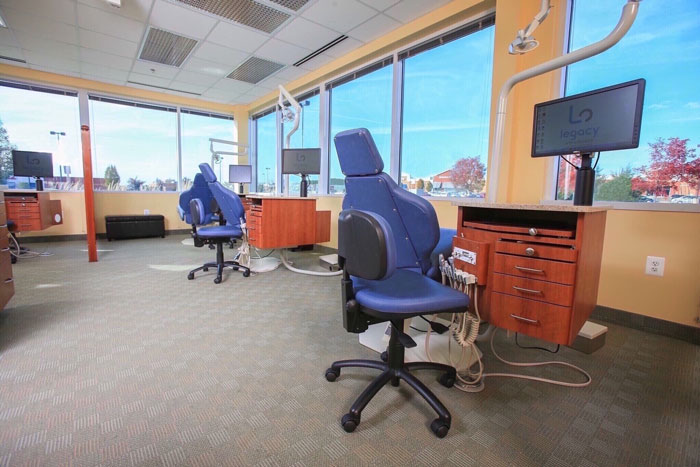The Basic Principles Of Legacy Orthodontics
Wiki Article
The Legacy Orthodontics PDFs
Table of ContentsLegacy Orthodontics - An OverviewThe Greatest Guide To Legacy OrthodonticsSome Known Incorrect Statements About Legacy Orthodontics Facts About Legacy Orthodontics UncoveredLegacy Orthodontics Can Be Fun For Everyone
At Advanced Orthodontics, we give individuals with a all natural treatment experience. Furthermore, we use adjustable therapy schedules, adaptable repayment choices and an enjoyable, delightful experience. orthodontics. Call ( 480) 357-4900 today to learn more and timetable a consultation.An orthodontist is a dental professional educated to detect, protect against, and treat teeth and jaw irregularities. They correct existing problems and are educated to determine issues that may develop in the future. Orthodontists collaborate with people of all ages, from youngsters to grownups. People frequently connect an ideal smile with healthiness.
Malocclusion, or misaligned teeth, can bring about oral issues, including tooth decay, periodontal illness, and tough or excruciating chewing. Yet not everyone is born with straight teeth. If you have a poor bite or large spaces between your teeth, you might wish to speak with a dental expert specializing in orthodontic care.
Excitement About Legacy Orthodontics
( Image Credit Score: DigitalVision/Getty Images) Orthodontists use taken care of and removable dental devices, like dental braces, retainers, and bands, to alter the setting of teeth in your mouth. Orthodontic therapy is for dental irregularities, including: Crooked teethBite troubles, like an overbite or an underbiteCrowded teeth or teeth that are as well much apartJaw misalignmentThe goal of orthodontic treatment is to boost your bite.While you may assume of orthodontists as primarily for children or teens that require braces, they can fix oral problems at any kind of age. Orthodontists attend college, dental school, and orthodontic institution.
All orthodontists are dental experts, yet not all dental professionals are orthodontists. Orthodontic residency programs use intensive, concentrated instruction for oral specialists. They concentrate on 2 areas: How to properly and safely relocate teeth How to appropriately guide growth in the teeth, jaw, and faceOnce an orthodontist has completed training, they have the choice to end up being board certified.
Legacy Orthodontics - Truths
Malocclusion leads to tooth congestion, a misshapen jaw, or irregular bite patterns. Malocclusion is typically treated with: Your orthodontist attaches metal, ceramic, or plastic square bonds to your teeth.If you have only minor malocclusion, you might be able to make use of clear braces, called aligners, rather of typical braces (https://www.domestika.org/en/brianmccune20176). Some people need a headgear to help move teeth right into line with stress from outside the mouth. After dental braces or aligners, you'll require to use a retainer. A retainer is a custom tool that maintains your teeth in position.
They can develop additional room in the mouth without having to draw teeth. Orthodontists utilize cords, surgical screws, or plates to support your jaw bone.
You might need to see an orthodontist if you have: Crowding or otherwise adequate area for every one of your teethOverbite, when your top teeth come over your bottom teethUnderbite, when your bottom teeth are also far forwardSpacing or problems with gapsCrossbite, which is when your top teeth fit behind your bottom teeth when your mouth is closedOpen bite or an upright space between your front bottom and upper teethMisplaced midline, when the center of your bottom and upper teeth don't align Remedying a dental malocclusion can: Make attacking, eating, and talking easierImprove the symmetry of our face and your overall appearanceEase pain from temporomandibular joint disordersSeparate your teeth and make them easier to clean, aiding prevent dental cavity or cavities It's frequently a dental professional that first notices misaligned teeth throughout a regular test.
Legacy Orthodontics Fundamentals Explained

During your initial orthodontic consultation, you'll likely have: An oral examPhotos taken see this site of your face and smileDental X-raysPanoramic (360 degree) X-rays of your face and headImpressions to develop molds of your teethThese tests will aid your orthodontist understand exactly how to proceed with your therapy. orthodontist. An orthodontist is a dentist who's had training to treat your teeth and jaw
An orthodontist is concentrated on your bite, so something like a broken tooth would certainly be dealt with by a dental professional. Orthodontists are concentrated on your bite, or the way your teeth fit together, and the straightness of your teeth. Ever wondered just how stars constantly seem to have flawlessly straightened teeth? Orthodontists are oral experts who focus on correcting irregularities in the teeth and jaws.
Legacy Orthodontics Can Be Fun For Anyone

, orthodontists have a diverse toolkit at their disposal. These tried-and-true braces utilize a system of braces bonded to the teeth and linked by wires.
These removable trays are personalized to progressively shift the teeth's placement. In cases of slim jaws, palatal expanders can be used to develop room for correct tooth placement.
Report this wiki page